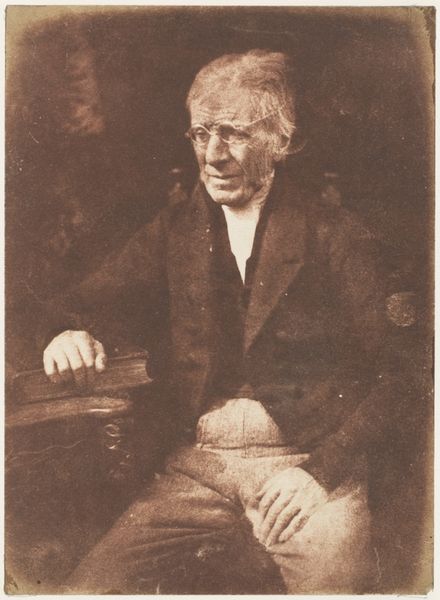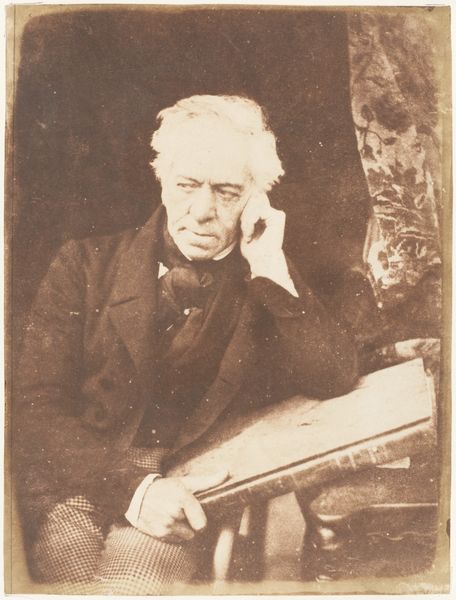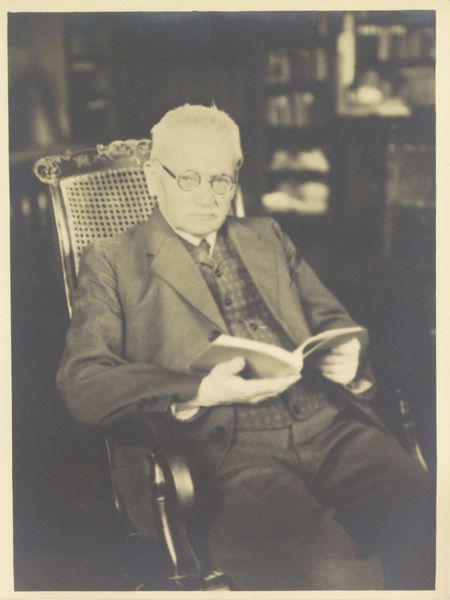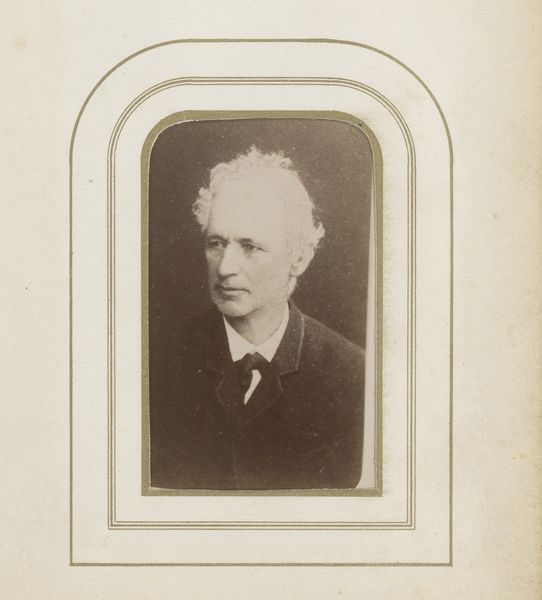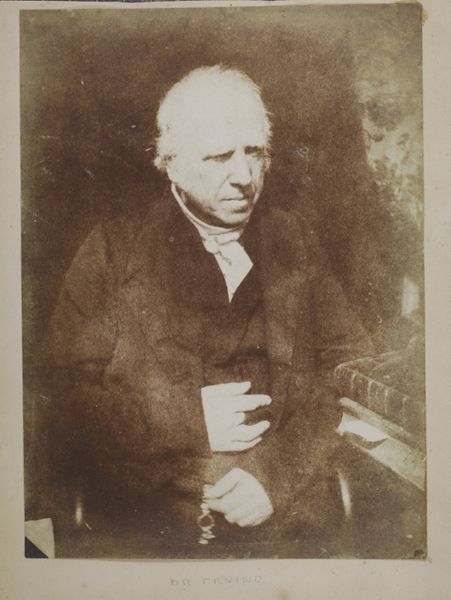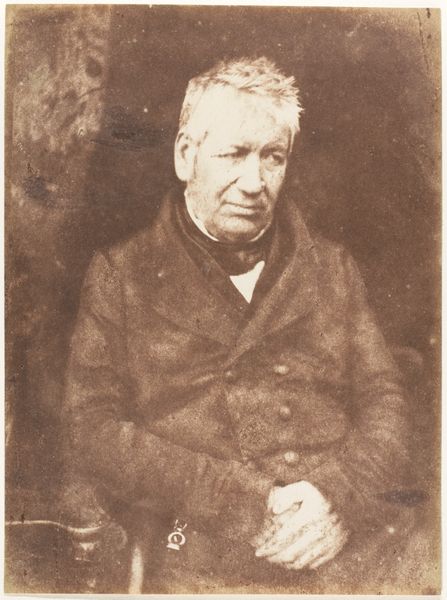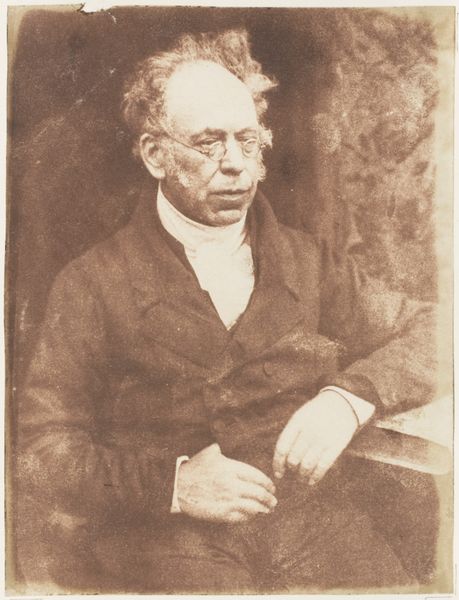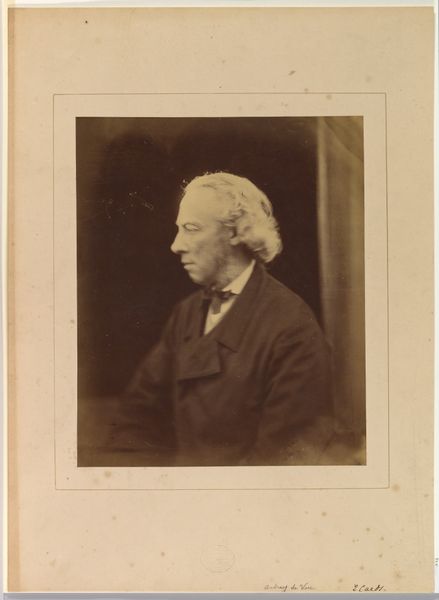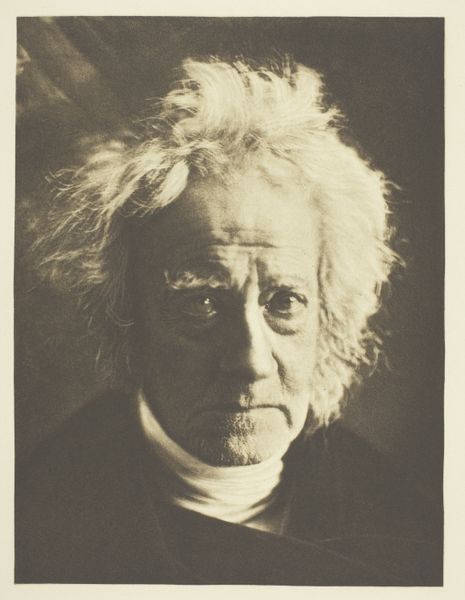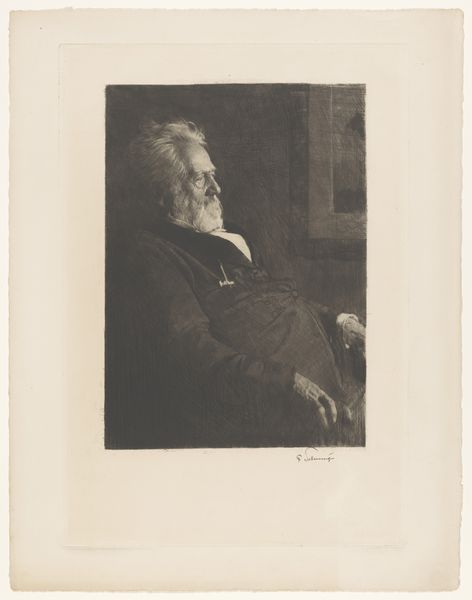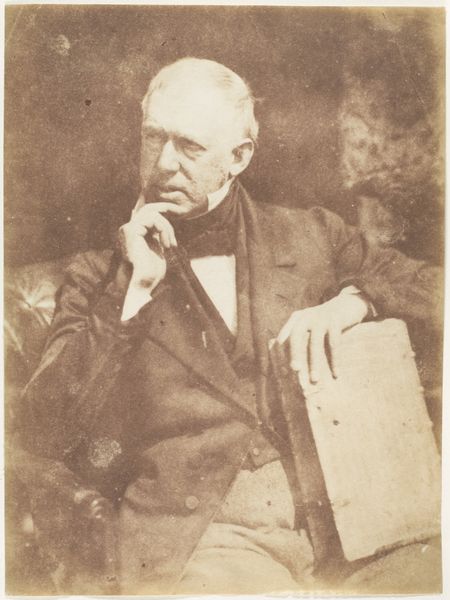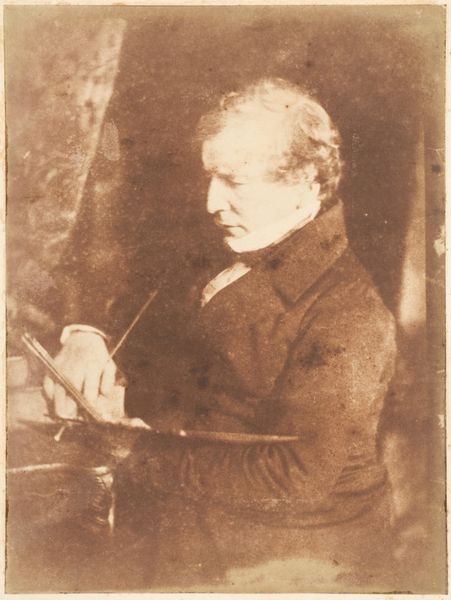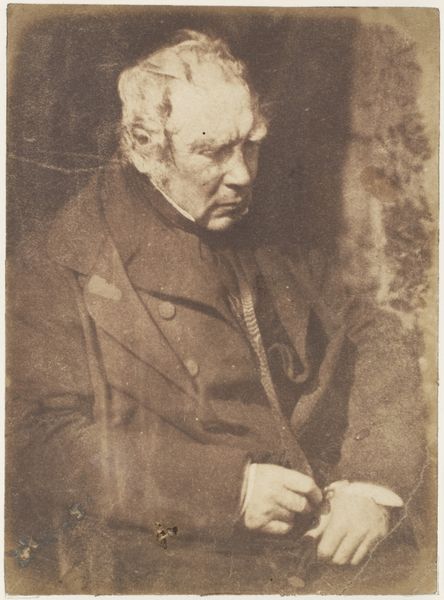
daguerreotype, photography
#
portrait
#
16_19th-century
#
daguerreotype
#
photography
#
historical photography
#
romanticism
Copyright: Public Domain
Editor: This daguerreotype, “Sir William Allan,” was created by Hill and Adamson sometime between 1843 and 1847. The sepia tones and somewhat blurred details give it a really dreamlike quality. What's striking to you about this piece? Curator: What interests me most is the materiality of this daguerreotype. Think about the labour involved in its creation, from the silver-plated copper polished to a mirror finish to the toxic mercury fumes used to develop the image. How does this meticulous process affect our perception of portraiture itself? Is it elevating or democratizing? Editor: That's a perspective I hadn't considered. The process really was quite involved! I was focusing more on the aesthetic – the romantic pose and soft lighting. So, you’re suggesting the very act of creating a photograph challenged existing social hierarchies? Curator: Exactly. Photography, though requiring expertise and equipment, allowed for a different kind of representation compared to traditional painted portraiture, impacting who could be memorialized and how. Do you think the accessibility of photography shifted cultural values toward broader representation? Editor: I can see that. Suddenly capturing a likeness wasn’t limited to the wealthy who could afford a painted portrait. The democratization of the image... fascinating! I’ll definitely be researching that further. Curator: Indeed. Thinking about photography not just as art, but as a product of specific social and technological conditions, offers a rich and complex understanding of its history. Editor: I hadn’t really appreciated how much the material processes shaped the art. Thanks for highlighting that, I've definitely got a lot to think about.
Comments
No comments
Be the first to comment and join the conversation on the ultimate creative platform.
